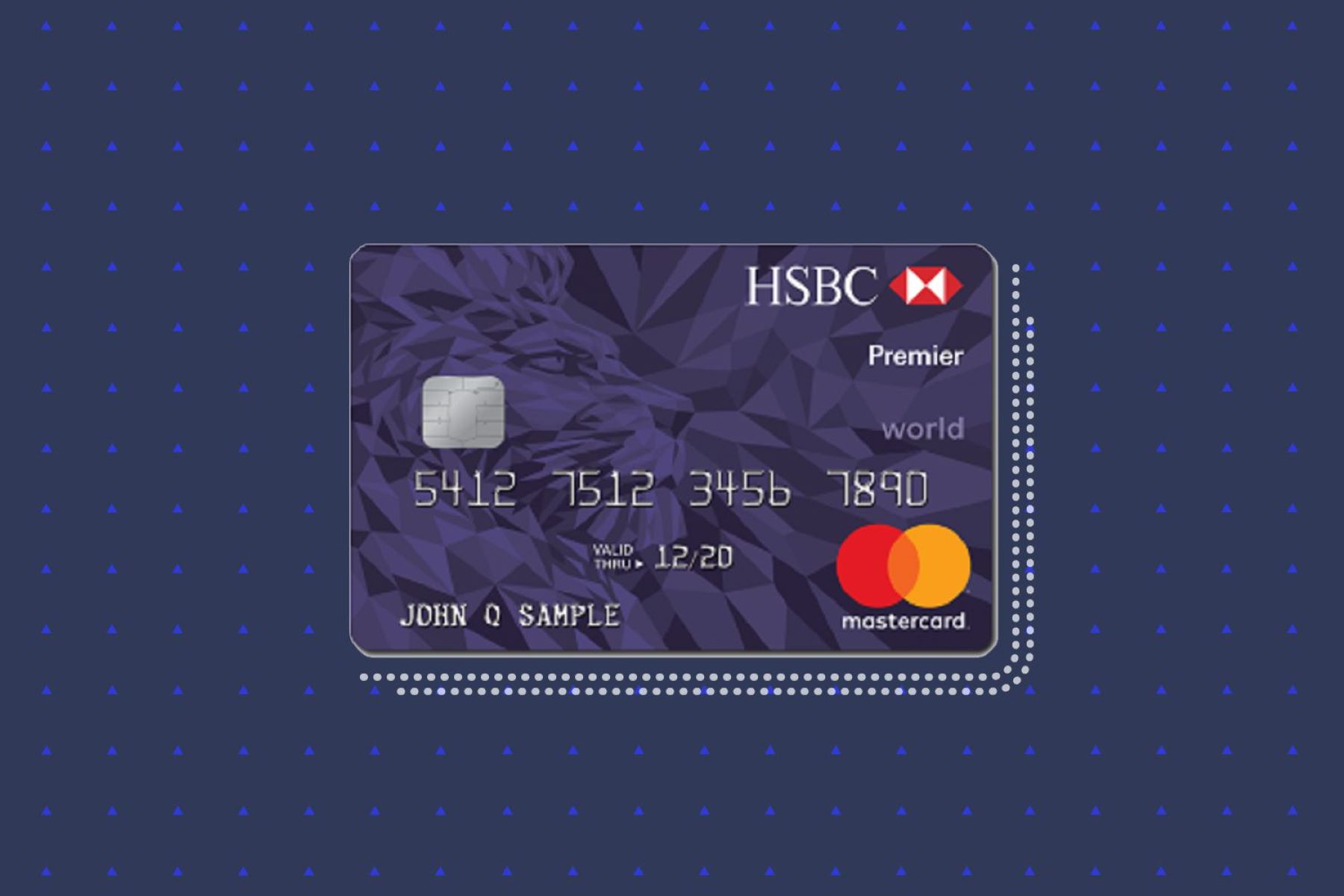

Finance
How To Transfer Credit Card Balance
Modified: March 1, 2024
Looking to transfer your credit card balance? Discover how you can save on interest and manage your finances with our step-by-step guide.
(Many of the links in this article redirect to a specific reviewed product. Your purchase of these products through affiliate links helps to generate commission for LiveWell, at no extra cost. Learn more)
Table of Contents
- Introduction
- Understanding Credit Card Balance Transfers
- Why Transfer Credit Card Balances to Discover?
- Step-by-Step Guide to Transferring Credit Card Balance to Discover
- Considerations Before Transferring Credit Card Balance
- Pros and Cons of Credit Card Balance Transfers
- Tips for Successfully Transferring Credit Card Balance to Discover
- Frequently Asked Questions (FAQs) about Credit Card Balance Transfers to Discover
- Conclusion
Introduction
Transferring credit card balances is a popular strategy for managing debt and saving money. If you have high-interest credit card debt, taking advantage of a balance transfer can help you consolidate your balances onto one card with a lower interest rate. Discover, one of the leading credit card issuers, offers attractive balance transfer options to help you take control of your financial situation and save on interest payments.
In this comprehensive guide, we will walk you through the process of transferring your credit card balance to Discover. We’ll explore the benefits of choosing Discover for your balance transfer, provide you with a step-by-step guide on how to transfer your balance, and offer tips and considerations for success. Whether you’re looking to pay off debt faster or simply want to take advantage of a better interest rate, this article will equip you with the knowledge you need to make an informed decision.
Please note that while a balance transfer can be a powerful tool, it is important to carefully consider your financial situation and understand the terms and conditions of the transfer. We encourage you to consult with a financial advisor or do further research before proceeding with a balance transfer.
Now, let’s dive deeper into the world of credit card balance transfers and discover how you can make the most of this financial strategy with Discover.
Understanding Credit Card Balance Transfers
Before we delve into the specifics of transferring your credit card balance to Discover, let’s first clarify what a balance transfer is and how it works.
A credit card balance transfer entails moving the outstanding balances from one or multiple credit cards to a new card. This transfer allows you to consolidate your debts into a single account and potentially take advantage of a lower interest rate. By transferring your balances, you can simplify your bill payments and save money on interest charges.
Here are some key points to understand about credit card balance transfers:
- Interest rates: One of the primary motivations for a balance transfer is to obtain a lower interest rate. Many credit card issuers, including Discover, offer introductory 0% APR (Annual Percentage Rate) promotional periods on balance transfers. This means that for a specified period of time, typically 6 to 18 months, you will not accrue any interest on the transferred balance.
- Balance transfer fees: It’s essential to be aware that most balance transfers involve a fee, typically around 3-5% of the transferred amount. While this fee may initially appear counterproductive, it is important to compare it against the potential savings from a lower interest rate. In some cases, the long-term interest savings outweigh the upfront fee.
- Payment allocation: When you make payments towards your credit card balance, they are typically allocated towards the highest interest portion first. This means that any purchases or cash advances you make on a credit card with a transferred balance may accrue interest until the full balance transfer is paid off.
- Eligible debts: Not all debts are eligible for a balance transfer. Generally, you can transfer balances from other credit cards, personal loans, or store cards. However, certain types of debt, such as mortgages or car loans, are typically not transferrable.
- Impact on credit score: When you apply for a new credit card for the purpose of a balance transfer, it may have a temporary impact on your credit score. The inquiry and the new credit card account will be reflected in your credit report. However, if you make timely payments and manage your credit responsibly, the long-term impact on your credit score can be positive.
Understanding these key concepts will help you make an informed decision when considering a credit card balance transfer. Now, let’s explore why transferring your credit card balance to Discover can be a smart choice.
Why Transfer Credit Card Balances to Discover?
When it comes to credit card balance transfers, Discover offers several compelling reasons to consider them as your transfer destination. Let’s delve into the key advantages of transferring your credit card balances to Discover:
- Competitive balance transfer offers: Discover is known for its competitive balance transfer offers, including introductory 0% APR promotional periods. By taking advantage of these offers, you can save money on interest payments and accelerate your debt payoff.
- No annual fee: Discover credit cards typically have no annual fee, making them a cost-effective choice for managing your debts. This means that you can focus on paying off your balance without incurring additional fees.
- Rewards program: Unlike many other credit card issuers, Discover offers a rewards program on their credit cards. This means that you can earn cashback, travel points, or other rewards while paying off your transferred balance. This added perk can provide extra value and help you make the most of your credit card usage.
- Online account management: Discover provides a user-friendly online platform that allows you to easily manage your account, track your payments, and access valuable resources and tools for financial management. Their mobile app also offers convenience and accessibility on the go.
- Excellent customer service: Discover has a strong reputation for providing excellent customer service. Whether you have questions about your balance transfer, need assistance with your account, or require support during the process, you can rely on Discover’s responsive and knowledgeable customer service team.
- Bonus features and benefits: Discover credit cards often come with additional features and benefits such as purchase protection, extended warranty coverage, and access to special discounts and offers. These extras can enhance your overall credit card experience and provide added value.
With these advantages, Discover presents itself as a reputable and advantageous choice for transferring your credit card balances. However, it’s important to evaluate your specific financial needs and circumstances to ensure that a balance transfer to Discover aligns with your goals. In the next section, we’ll guide you through the step-by-step process of transferring your credit card balance to Discover.
Step-by-Step Guide to Transferring Credit Card Balance to Discover
Transferring your credit card balance to Discover is a straightforward process. Follow these step-by-step instructions to initiate your balance transfer:
- Evaluate your current credit card balances: Take stock of your outstanding credit card balances, including the interest rates and total amounts owed. Having a clear understanding of your debt will help you determine how much you need to transfer to Discover.
- Select the right Discover credit card: Browse through Discover’s range of credit card options and select the one that best suits your needs. Look for cards with attractive balance transfer offers and low or 0% introductory APR periods.
- Apply for the Discover credit card: Once you’ve chosen the right Discover credit card, complete the application process. Provide the necessary information, including personal details and financial information, to apply for the card. If approved, you will receive the card in the mail.
- Activate your Discover credit card: Once you receive your new Discover credit card, activate it either online or by phone as per the instructions provided. This step is crucial to ensure that your card is active and ready to use.
- Request a balance transfer: Contact Discover’s customer service or log in to your online account to initiate the balance transfer request. Provide the required information, including the details of the credit card(s) from which you want to transfer your balance(s).
- Specify the transfer amount: Clearly indicate the amount you wish to transfer to Discover. It can be the full balance or a partial transfer, depending on your financial situation and goals.
- Complete the balance transfer: Confirm the balance transfer details and authorize the transfer. Review the terms and conditions of the balance transfer, including any applicable fees, interest rates, and promotional periods.
- Monitor your account: Once the balance transfer is complete, keep a close eye on your Discover account. Ensure that the transferred balance is reflected accurately and confirm that any promotional rates or offers are being applied correctly.
- Create a repayment plan: With your balance transferred to Discover, it’s crucial to create a repayment plan to pay off your debt. Make regular payments and aim to pay off the balance before the promotional period ends to avoid any interest charges.
As you navigate the balance transfer process, it’s important to be mindful of any fees, terms, and limitations associated with the transfer. Additionally, ensure that you continue making payments on your old credit card until the transfer is confirmed to avoid any late fees or negative impacts on your credit score.
By following these steps, you can successfully transfer your credit card balance to Discover and take a significant step towards managing your debt effectively and saving on interest payments.
Considerations Before Transferring Credit Card Balance
While a credit card balance transfer can be a useful tool for managing debt, it’s important to carefully consider some key factors before proceeding with the transfer. Here are a few considerations to keep in mind:
- Balance transfer fees: Most balance transfers involve a fee, typically around 3-5% of the transferred amount. Evaluate whether the potential interest savings outweigh the upfront fee. If the fee is high and your balances are relatively low, it may not be cost-effective to proceed with the transfer.
- Promotional period: Consider the duration of the promotional period. If you don’t anticipate being able to pay off the balance within the promotional period, take into account the interest rate that will apply after the promotional period ends. Make sure the post-promotional interest rate is something you can afford.
- Available credit limit: Check the available credit limit on your new Discover credit card. Ensure that it is sufficient to accommodate the balance transfer you plan to make. Transferring the entire balance may max out your credit limit, which can negatively impact your credit score.
- Eligible debts: Confirm that the debts you wish to transfer are eligible for a balance transfer. While credit card balances are usually eligible, certain types of debt, such as mortgages or car loans, cannot be transferred.
- Closing old accounts: Decide whether you want to keep your old credit card accounts open or close them after the balance transfer. Closing accounts can impact your credit utilization ratio and potentially affect your credit score. However, keeping them open may lead to the temptation of accumulating more debt.
- Effect on credit score: Understand that a credit card balance transfer may have a temporary impact on your credit score. Opening a new credit card account and transferring balances can result in a credit inquiry and a temporary decrease in your score. However, if you make timely payments and manage your credit responsibly, your credit score can improve in the long run.
- Payment allocation: Be aware that payments made towards your credit card balance will most likely be allocated towards the transferred balance first. This means that any new purchases or cash advances on your Discover credit card may accrue interest until the balance transfer is paid off.
By considering these factors, you can make an informed decision and determine whether a credit card balance transfer is the right move for your financial situation. Take the time to calculate potential savings, evaluate your repayment capabilities, and weigh the pros and cons before proceeding.
Now that you’ve considered these important factors, let’s explore the pros and cons of credit card balance transfers to Discover in the next section.
Pros and Cons of Credit Card Balance Transfers
Before initiating a credit card balance transfer to Discover or any other credit card issuer, it’s essential to weigh the pros and cons. Understanding the advantages and potential drawbacks will help you make an informed decision. Let’s explore both sides:
Pros:
- Interest savings: The primary benefit of a credit card balance transfer is the potential to save money on interest payments. By moving your balances to a card with a lower interest rate, you can reduce the amount of interest you pay each month, allowing you to repay your debt faster.
- Consolidation of debts: Transferring multiple balances onto one credit card streamlines your debt management. Instead of juggling multiple payments and due dates, you can focus on a single monthly payment, making it easier to stay organized and track your progress.
- Potential promotional offers: Many credit card issuers, including Discover, offer introductory 0% APR promotional periods on balance transfers. This means that for a specified period, you won’t accrue any interest on the transferred balance, giving you the opportunity to make significant progress in paying off your debt without additional interest charges.
- Simplify bill payment: Combining multiple debts into one credit card simplifies your bill payment process. With fewer accounts to manage, it’s easier to keep track of payments, due dates, and minimum payment requirements.
- Potential rewards: Some credit card issuers, like Discover, offer rewards programs on their credit cards, providing the opportunity to earn cashback, travel points, or other perks. By using your transferred balance to make purchases, you can maximize your rewards earning potential.
Cons:
- Balance transfer fees: Many balance transfers come with a fee, typically around 3-5% of the transferred amount. This upfront cost needs to be factored into your decision-making process. However, in many cases, the long-term interest savings outweigh the initial fee.
- Impact on credit score: Opening a new credit card account for a balance transfer may result in a temporary decrease in your credit score. The credit inquiry and a new account may affect your credit utilization and credit history length. However, with responsible credit card usage and timely payments, your credit score can recover and potentially improve over time.
- Post-promotional interest rates: After the promotional period ends, the interest rate on your transferred balance may revert to a higher rate. It’s important to carefully consider the post-promotional rate and ensure that you can comfortably manage the debt within that timeframe.
- Continued spending temptation: Consolidating your balances onto one credit card may create the temptation to continue using that card for new purchases. If you continue to rack up debt, you may find yourself in a worse financial situation. It’s important to exercise discipline and avoid accumulating more debt.
- Potential impact on credit utilization: Transferring balances to a new credit card can initially reduce your available credit, which may impact your credit utilization ratio. This ratio compares your outstanding debt to your total available credit and can influence your credit score. Keep this in mind if you plan to apply for new credit in the near future.
Considering both the advantages and potential drawbacks of credit card balance transfers will help you make a well-informed decision. Assess your personal financial situation and goals before proceeding with a balance transfer to ensure it aligns with your needs and capabilities.
Next, we’ll provide you with some tips to ensure a successful credit card balance transfer to Discover.
Tips for Successfully Transferring Credit Card Balance to Discover
Transferring your credit card balance to Discover can be a strategic move to manage debt and save money on interest payments. To ensure a successful balance transfer process, consider the following tips:
- Understand the terms and conditions: Familiarize yourself with the terms and conditions of the balance transfer offer. Pay attention to the promotional period, post-promotional interest rates, balance transfer fees, and any other relevant details. This understanding will help you make informed decisions and avoid surprises.
- Calculate potential savings: Determine the potential interest savings by transferring your balance to Discover. Compare the interest you would pay on your current credit cards versus what you would pay during the promotional period. This calculation will help you assess the financial benefit of the transfer and make an informed decision.
- Pay attention to timing: Plan your balance transfer strategically. Make sure you initiate the transfer early enough to allow for processing time. Consider any upcoming due dates on your old credit cards and ensure that you make the minimum payments to avoid late fees or negative impacts on your credit score.
- Plan for repayment: Create a repayment plan to pay off your transferred balance before the promotional period ends. Calculate how much you need to pay each month to eliminate the debt by the deadline. Taking a proactive approach to repayment will help you avoid interest charges and stay on track.
- Avoid new purchases: While you may have a credit limit on your new Discover card, resist the temptation to make new purchases. Focus on paying off your transferred balance and avoid accumulating additional debt. By staying disciplined, you can maximize the benefits of the balance transfer and achieve your financial goals faster.
- Monitor your account: Regularly monitor your Discover account to ensure that the balance transfer is processed correctly, and the promotional rates are applied as expected. Keep track of your payments, due dates, and any changes to your account terms. Staying vigilant will help you stay in control of your finances.
- Continue making payments: Until the balance transfer is complete, continue making payments on your old credit cards. Late payments can negatively impact your credit score and incur additional fees. Once the transfer is confirmed, you can focus solely on making payments to your Discover card.
- Practice responsible credit card usage: After the balance transfer, use your Discover credit card responsibly. Make timely payments, avoid maxing out your credit limit, and keep your credit utilization ratio low. Responsible credit card usage will help you maintain a positive credit history and improve your overall financial health.
By following these tips, you can navigate the balance transfer process smoothly and maximize the benefits of transferring your credit card balance to Discover. Remember that each individual’s financial situation is unique, so consider your specific circumstances and goals when making decisions related to your credit card debt.
In the next section, we will address some frequently asked questions about credit card balance transfers to Discover.
Frequently Asked Questions (FAQs) about Credit Card Balance Transfers to Discover
As you navigate the process of transferring your credit card balance to Discover, you may have some questions. Here are answers to frequently asked questions to help address any concerns you may have:
1. Can I transfer balances from multiple credit cards to Discover? Yes, you can transfer balances from multiple credit cards onto your Discover credit card. Consolidating your debts onto one card can simplify your payment process and potentially save on interest payments. 2. How long does a balance transfer to Discover take? The timeframe for a balance transfer to Discover can vary. Typically, it takes around 7 to 10 business days for the transfer to be completed. However, it’s essential to initiate the transfer well in advance to ensure timely processing. 3. Is there a limit on the amount I can transfer to Discover? The amount you can transfer to Discover will depend on your available credit limit. Ensure that you have enough available credit to accommodate the balance transfer amount without maxing out your credit limit. 4. Do I need to close my old credit card accounts after the transfer? Closing your old credit card accounts is a personal decision. While it can simplify your finances, closing accounts may impact your credit utilization ratio and potentially your credit score. If you choose to keep them open, consider using the old accounts sparingly to avoid accumulating new debt. 5. Can I earn rewards on my transferred balance with Discover? Yes, Discover credit cards often come with rewards programs. You can earn cashback, travel points, or other rewards on purchases made with your transferred balance, maximizing the benefits of the balance transfer. 6. What happens if I can’t fully pay off the transferred balance within the promotional period? If you cannot pay off the transferred balance within the promotional period, interest charges will apply on the remaining balance. Make sure to review the terms and conditions of your specific balance transfer offer to understand the post-promotional interest rates and plan your repayment accordingly. 7. Will a credit card balance transfer affect my credit score? A credit card balance transfer may impact your credit score temporarily. Opening a new credit card for the transfer can result in a credit inquiry, which may have a slight negative impact. However, managing your credit responsibly and making timely payments can help improve your credit score over time. 8. Can I transfer balances from other types of debt, such as personal loans or store cards? Discover typically allows balance transfers from other credit cards, personal loans, and certain types of store cards. However, it is important to check with Discover to confirm their specific eligibility requirements. 9. Can I request a balance transfer after opening a Discover credit card? Yes, you can request a balance transfer to Discover after opening a Discover credit card. Contact Discover’s customer service or access your online account to initiate the balance transfer request. 10. Are there any additional fees or charges associated with a balance transfer to Discover? Discover, like many other credit card issuers, typically charges a balance transfer fee, usually around 3-5% of the transferred amount. This fee is important to consider in relation to the potential interest savings you may gain from the transfer.
We hope these FAQs have provided you with clarity and addressed some of your concerns about transferring your credit card balance to Discover. If you have further questions, we recommend reaching out to Discover’s customer service for personalized assistance.
Finally, let’s conclude our comprehensive guide to credit card balance transfers to Discover.
Conclusion
Transferring your credit card balance to Discover can be a smart financial move to save money on interest payments and streamline your debt management. In this comprehensive guide, we’ve explored the ins and outs of credit card balance transfers to Discover and provided valuable information to help you make an informed decision.
We discussed the importance of understanding balance transfers and the benefits of choosing Discover as your transfer destination. We provided a step-by-step guide to walk you through the process of transferring your balance, along with tips and considerations to ensure a successful transfer.
It’s essential to carefully evaluate your current financial situation, consider the potential interest savings, and understand the terms and conditions of the balance transfer offer. Take advantage of the promotional periods, rewards programs, and online account management tools offered by Discover to maximize the benefits of your transferred balance.
Remember to create a repayment plan and practice responsible credit card usage to pay off the balance before the promotional period ends. Regularly monitor your account and make timely payments to maintain a positive credit history and improve your overall financial health.
If you have further questions or concerns about credit card balance transfers to Discover, we encourage you to reach out to Discover’s customer service for personalized assistance.
Ultimately, through careful consideration and responsible financial management, a credit card balance transfer to Discover can help you gain control over your debt, save money, and pave the way to a healthier financial future.
Thank you for reading our guide, and we wish you success in your journey to financial freedom!














